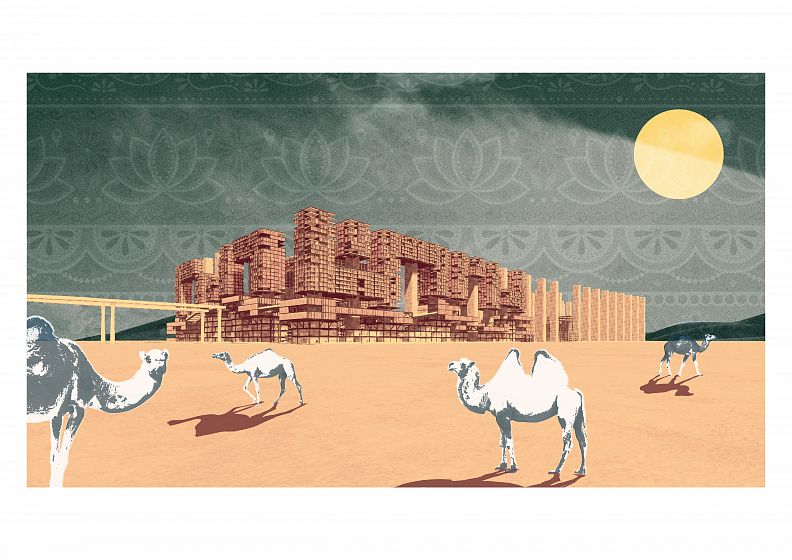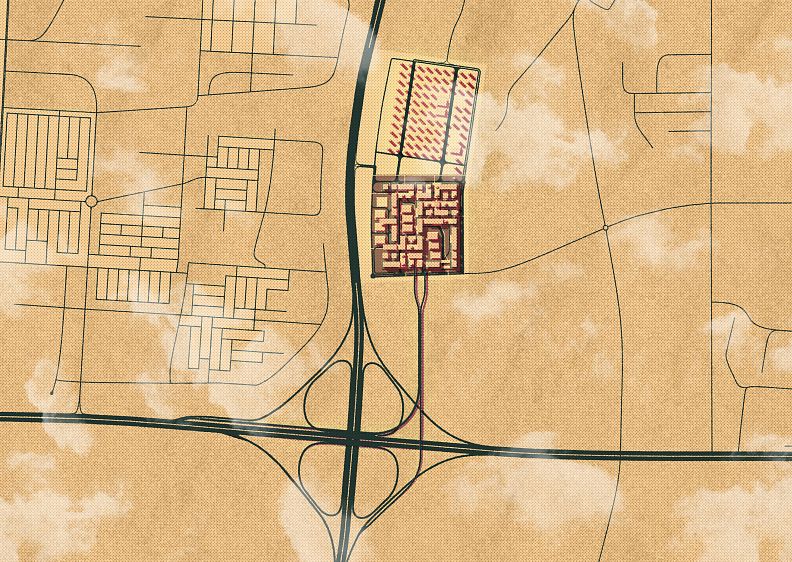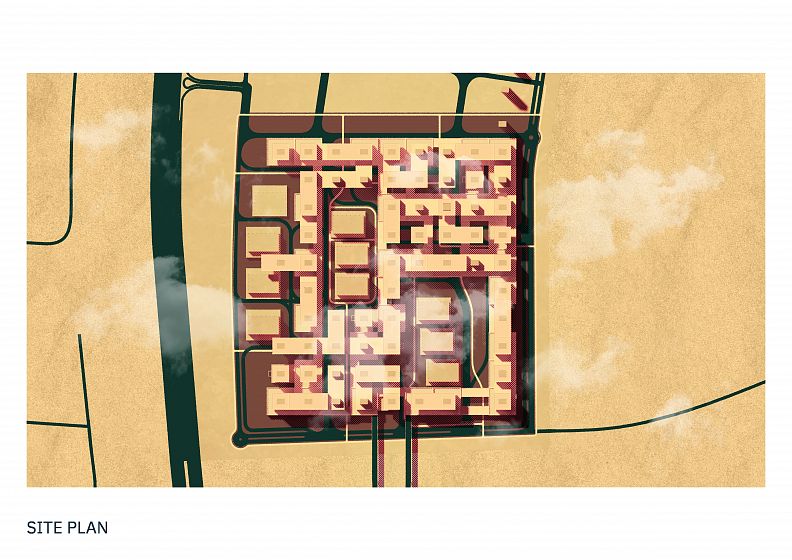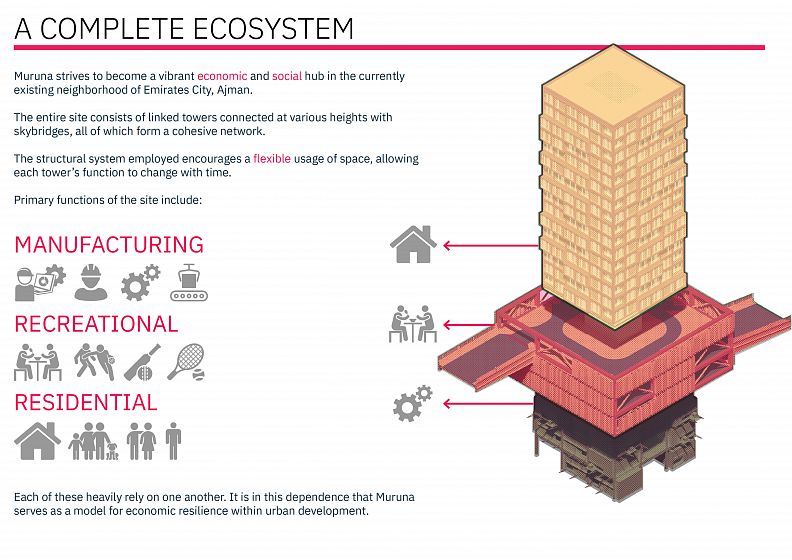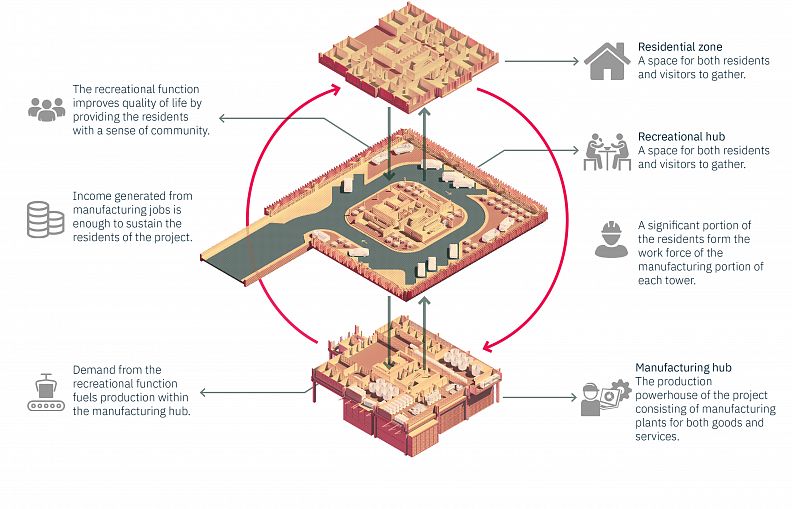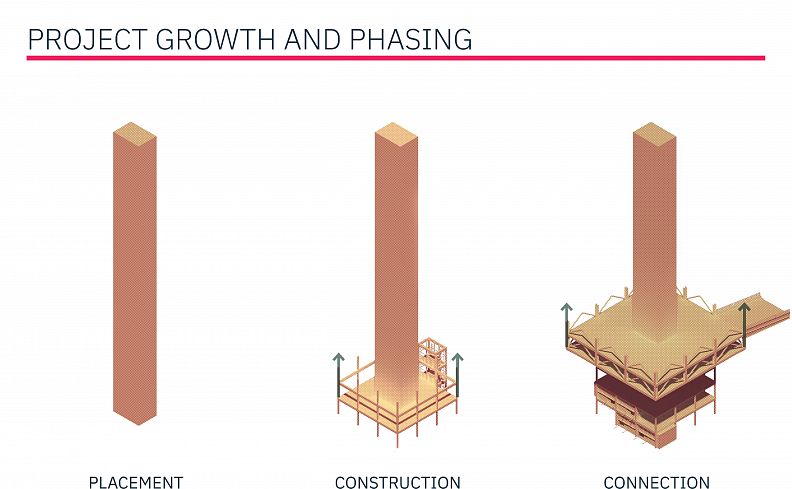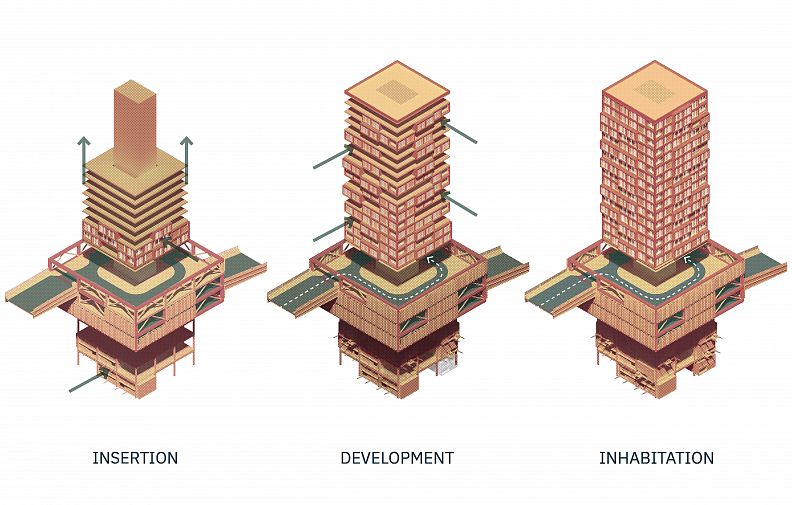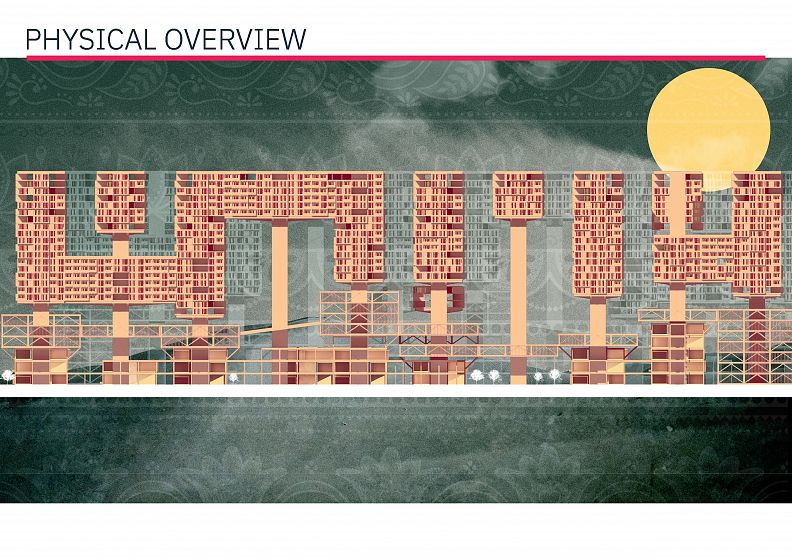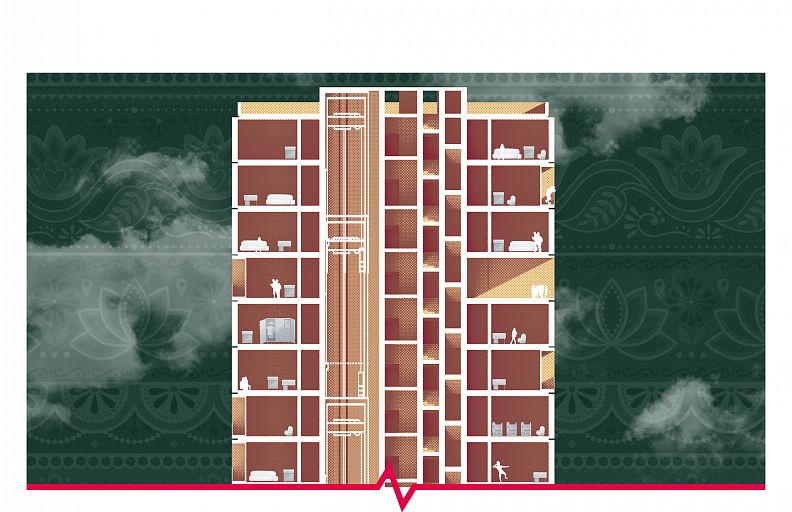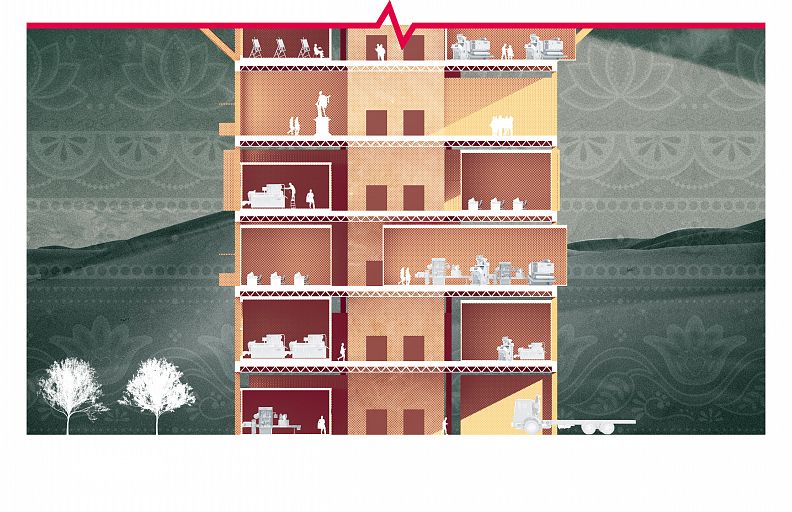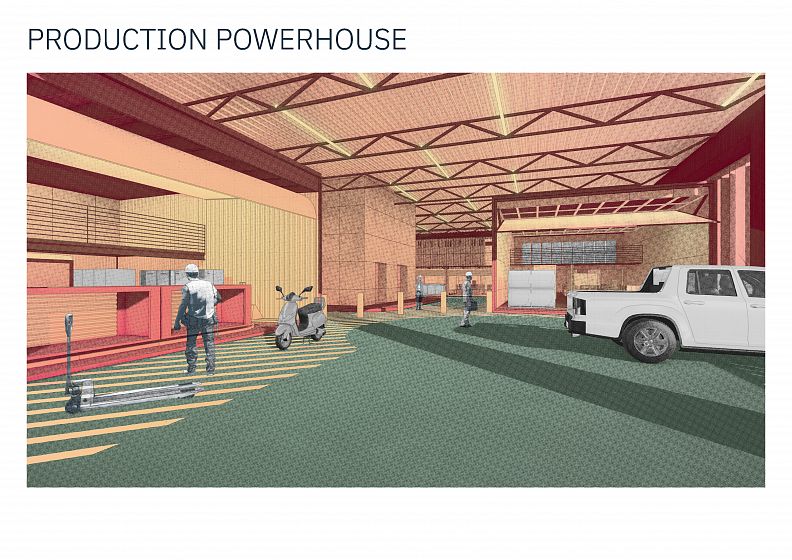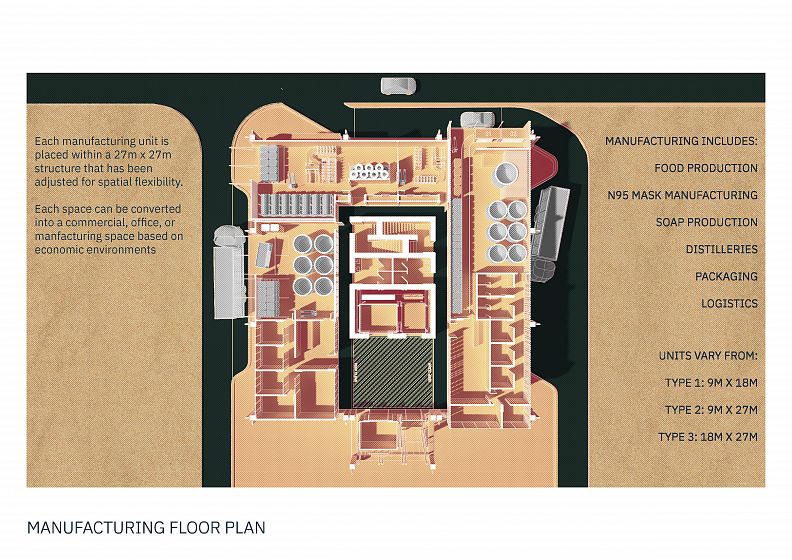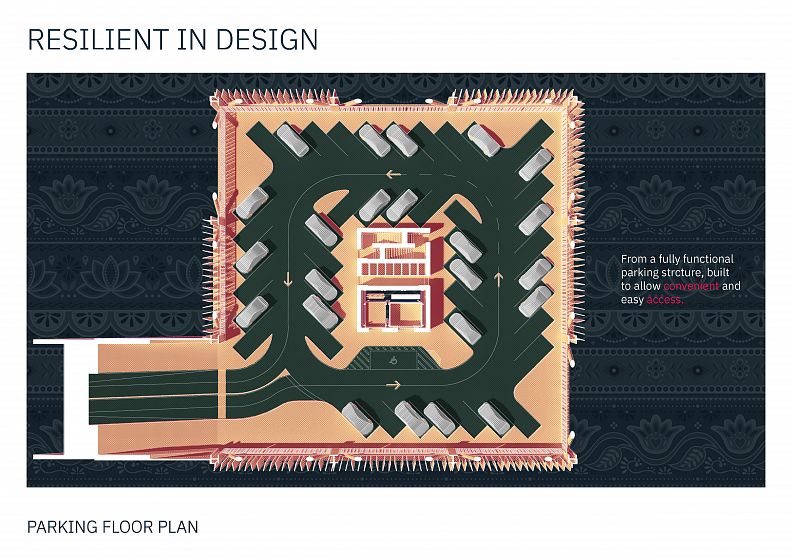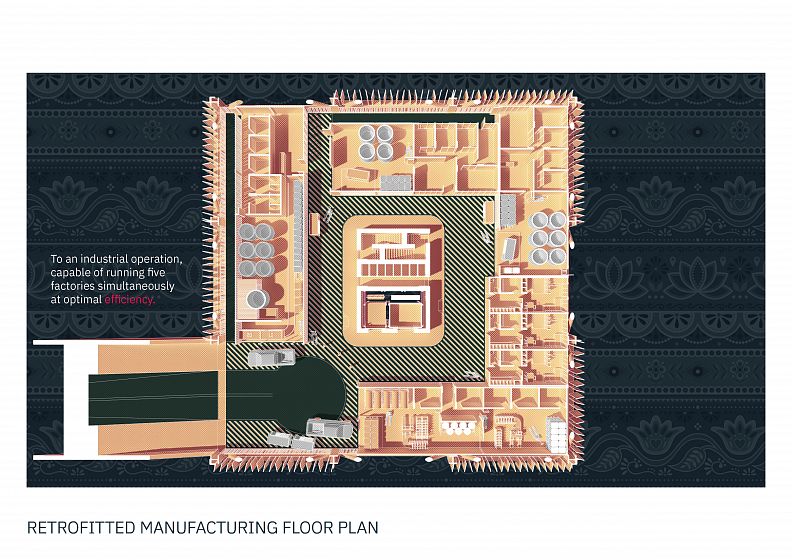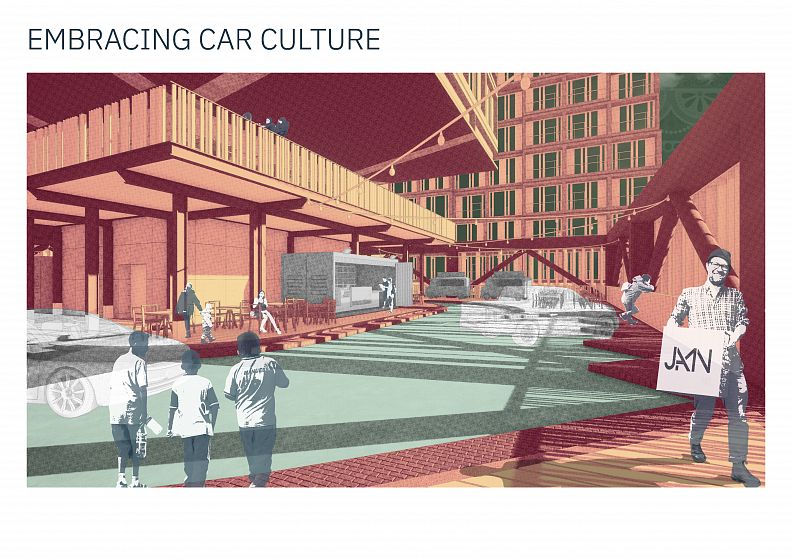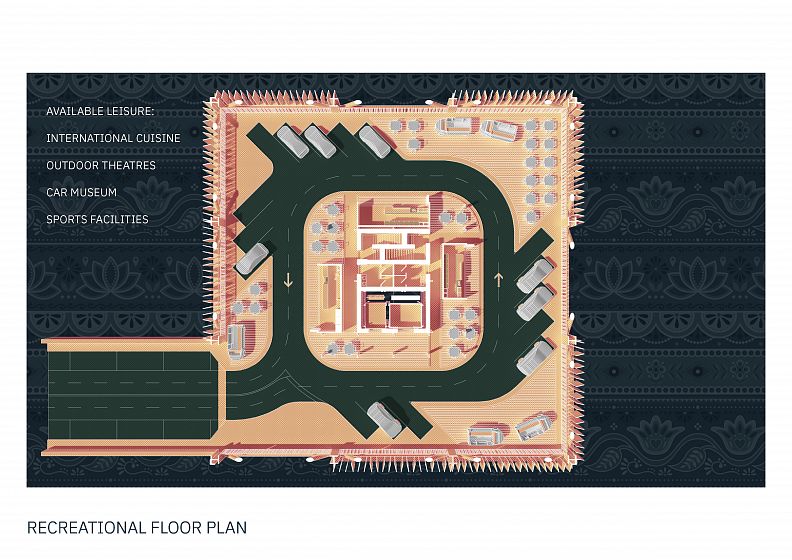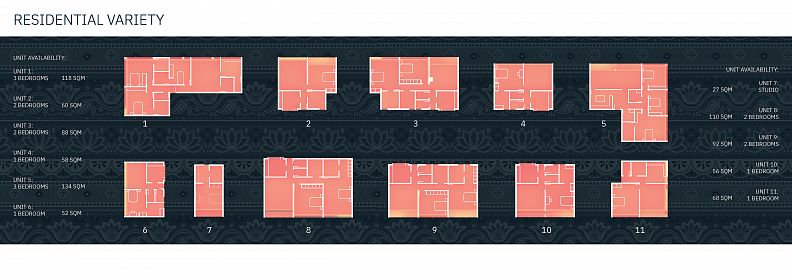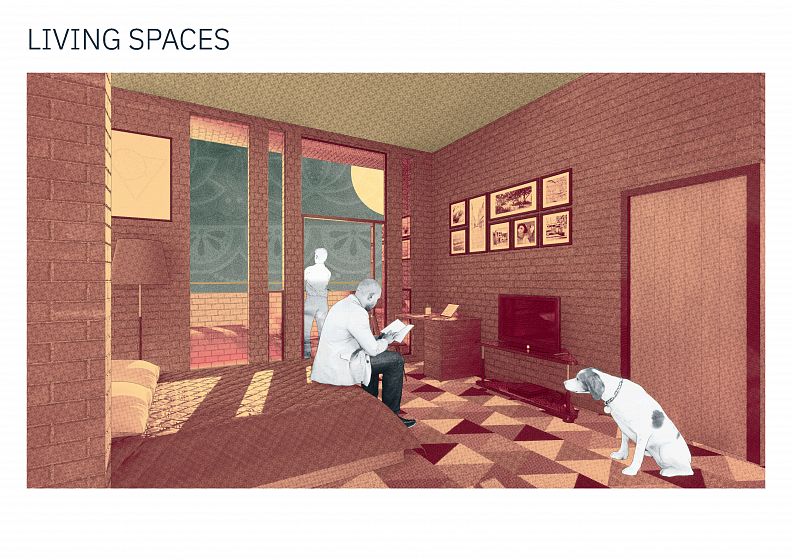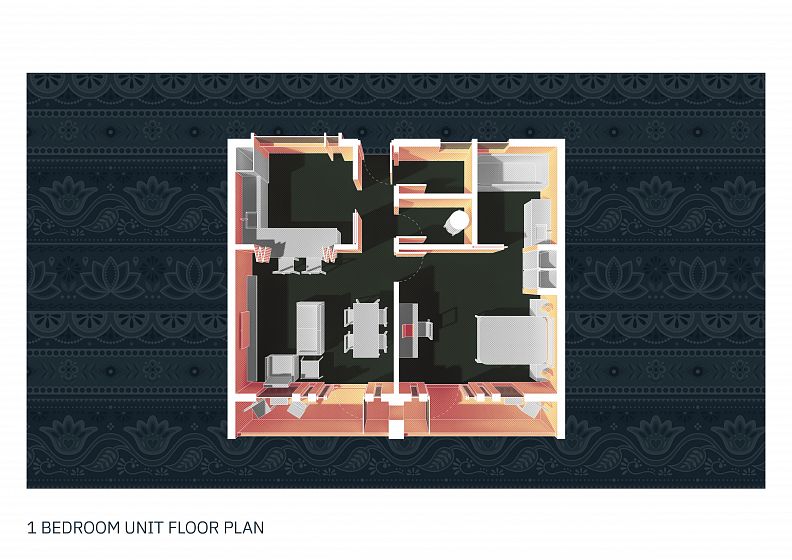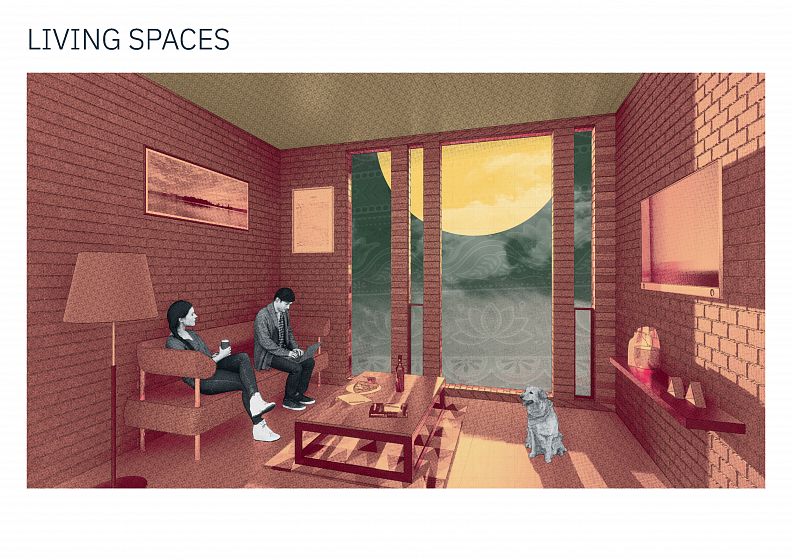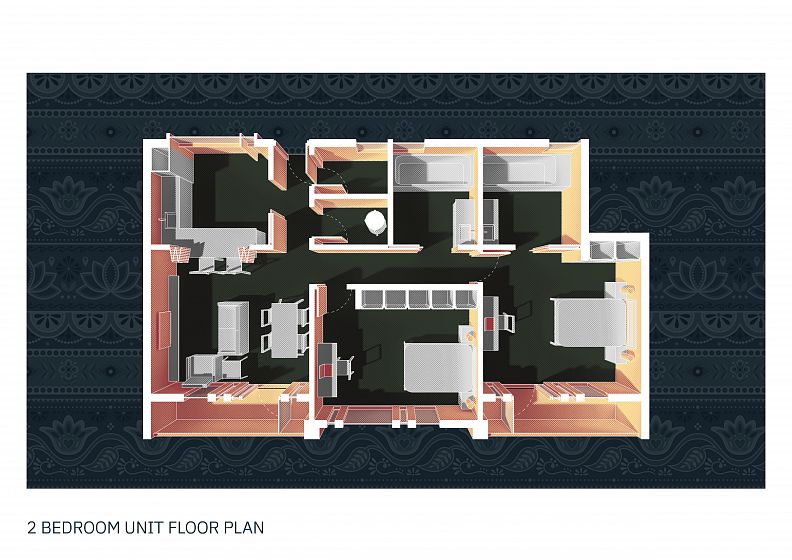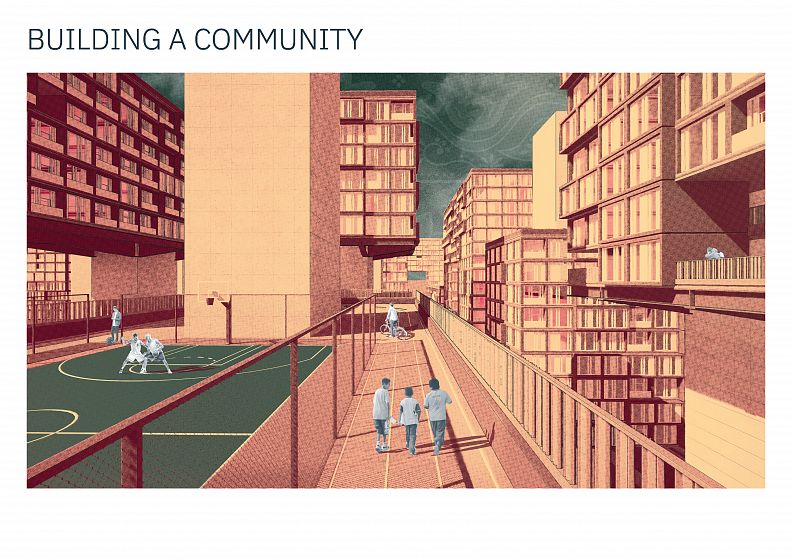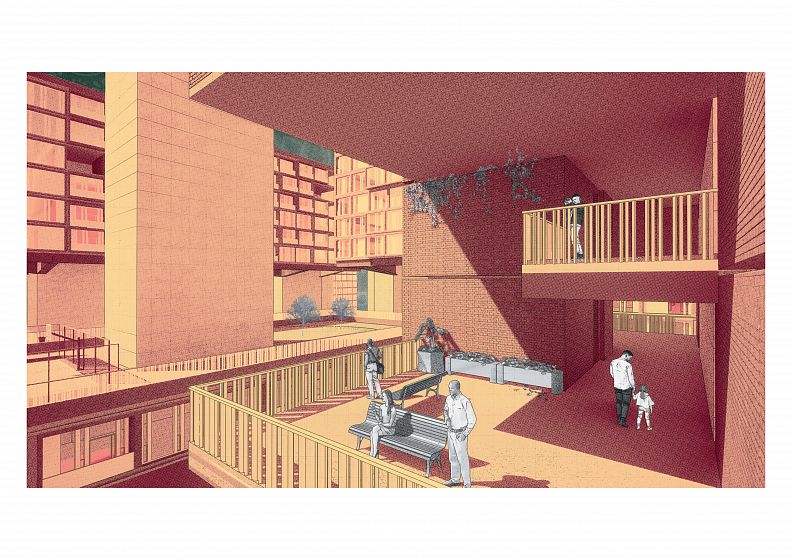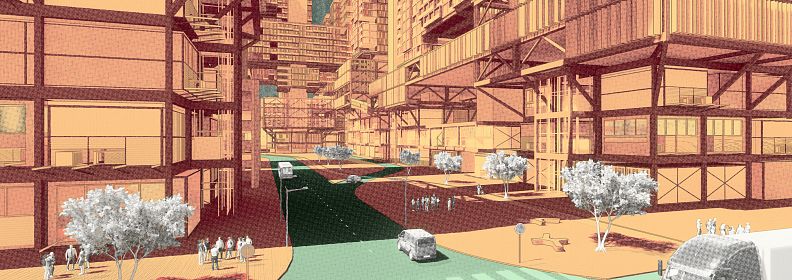Muruna: The Living City

Project idea
Muruna, an Arabic word pertaining to the qualities of resilience and adaptability, strives to become a vibrant economic and social hub within the sandy planes of the Emirati desert. Situated in Ajman, UAE, the project sits within the site of the existing Emirates City development, a project that never fully materialised primarily due to the economic downturn of 2008. Thus, Muruna serves as a critique of the economic model which led to the creation and ultimate failure of such projects, whilst also providing a sustainable alternative with a crucial emphasis on the social, economic, and recreational needs of its surrounding context.
A close analysis of the city of Ajman revealed constantly changing trends in economic and industrial activity within the emirate, with shifts toward light industry, automation, and informational technology. However, it was also found that these industries are currently supported by a static and unresponsive built environment, constructed to serve the economic needs in the short term. Thus, the presence of rapidly changing industries presented an opportunity through the initiation of economic activity capable of being supported by an adaptable and flexible type of architecture. Ajman’s connection to the intercity E311 highway also presented an opportunity in terms of the potential for economic growth that could occur alongside the growth of neighbouring economic hubs, such as Sharjah and Dubai.
Muruna explores the concept of resilience through the presence of function that constantly responds to the demands of the surrounding context. The overall structural system also reinforces this resilience by providing the foundation for adaptability and spatial flexibility, that ultimately enables the project to effectively serve the economic and social demands of the city. This all serves as a possible solution for a type of architecture that flexibly responds to the needs of its context and which enables the flourishing of a balanced ecosystem, whereby built form aids in the process of economic, social, and recreational harmony.
Project description
Muruna functions at both a macro and micro scale, exploring various tower typologies that, when assembled together, create an intricate self-sufficient network. This modularity facilitates expansion throughout the city and allows the project to grow in direct response to the demands of the local economy. The tower typology also serves as a critique of the existing Emirates City tower typology, which typically consists of a solely residential tower placed atop a multi-story parking podium. Muruna sought to diversify this order, by varying the placement of parking podiums within each tower, whilst also incorporating mixed-use functions above, below, and within the parking podium itself.
The entire project consists of 64 concrete cores around which each tower is constructed. Each core provides logistical access for the programme of each tower and is built before the building’s programme itself in anticipation for future growth throughout the site. An individual tower’s function is made up of a combination of industrial, recreational, and residential spaces, each of which support one another and contribute to the creation of a balanced ecosystem. The recreational portion of each tower, accessible primarily through automobile access off the E311, provides a space for external visitors, and builds off the drive-thru dining culture prevalent throughout the Middle East.
The residential portion of each tower is catered toward a broad range of people across the socio-economic spectrum, with smaller units geared at single individuals and larger ones geared at families. The mixed placement of these units throughout each tower, along with the presence of shared sports facilities, also create a diverse environment in which individuals from different socio-economic backgrounds can interact freely.
Technical information
Muruna has been presented in the form of a developer brochure tailored toward prospective investors. The contents of the brochure consist of a context plan demonstrating the project’s location within the broader city of Ajman, along with a site plan demonstrating the project’s proximity to the intercity E311 highway.
A physical overview of a single tower and a series of generative diagrams demonstrate the interconnectedness and dependence of each function on one another. The generative diagrams demonstrate the phasing of a typical tower and the steps required in order to achieve completion. Each tower begins as a 100m tall core around which a 27m x 27m industrial floor plan, a 33m x 33m residential floor plan, and a 45m x 45m parking floor plan is built around. The divisibility of each tower’s structure by 3m allows any of the floor plans to change in function depending on the requirements of a tower’s users, as is demonstrated in the ability to retrofit a typical parking floor plan into a full-scale industrial operation.
Several panoramic renders also demonstrate how the entire project comes together as a whole to create a cohesive and lively urban intervention that truly harnesses Ajman’s potential to become an economic hub within the UAE.
Co-authors
Jace Marc Fernandes

